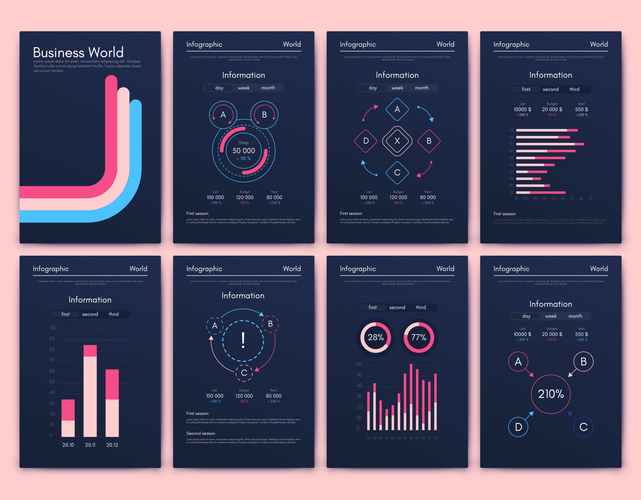Content
Some of the project managers/consultants might argue that if a client’s requirements are accurately identified in the early stages, then completing a full phase of requirements gathering is simply not needed. One can actually not stress enough on the importance of discovery phase. The gathering technique involves precise research on what customers need. The reason is the misunderstanding that could be due to a communication gap or gloomy narration of business objectives conveyed. Ultimately, the buyers are left high and dry and there could be a negative impact on the custom software development firm’s reputation.
Increments to be delivered to the customer consist not only of code and internal project documentation but also of user-oriented documentation. In other words, a delivered increment is a self-contained functional unit of software that performs some useful purpose for the customer, along with all supporting material . This approach requires a phase in which the requirements are carefully subdivided into functionalities that may be decomposed and delivered independently. The decision as to what order to deliver the increments is a key negotiation point between the developer and the customer. One possibility is to deliver the basic functionality of the system first and increasingly sophisticated functionality later. Another is to deliver what can be delivered quickly and delay to later stages those features that take longer to build.
Analyzing requirements
Conduct group interviews or group workshops to understand the flow of information between different stakeholders and end-users. This technique will ensure that there will be no conflict of interest later on during the project. In my 30 years of software user interface design I have found a top-down approach to user interface design to be most effective and efficient as a design process within the overall usability engineering lifecycle. In Level 2, page design standards, a second set of standards for the Website is generated for visually presenting and interacting with page content. This new set of standards is designed in the context of both the information architecture and the conceptual model design standards that have already been generated and validated. In conceptual model design, still within Level 1, the focus is still on navigation, but high-level design standards for presenting the information architecture visually are generated.
Technical requirements are expressed in structured language, which is used inside the organization. The output of this phase should be a feasibility study report that should contain adequate comments and recommendations for management about whether or not the project should be undertaken. Referencing to this information, the analysts does a detailed study about whether the desired system and its functionality are feasible to develop. Develop the test and evaluation requirements that will be used to determine acceptable system performance. Ensuring that projects are developed within the current and planned information technology infrastructure. This Guideline applies to all major application projects, both new applications and upgrades of existing applications.
Comparison chart: Enterprise collaboration tools
The users can be asked questions on these to clarify doubts of the users. SMEs or subject matter experts are the responsible people to conduct brainstorming sessions. This phase is critical as the information gathered will be utilized as a base for the System Requirements Specifications document. Although the discovery phase is an essential phase in any critical project plan, it is quite often overlooked with the absence of sufficient ground work. The customer specifications stay in the center because the rest are subordinates to the main factor.
- Process requirements prescribe activities to be performed by the developing organization.
- Use cases provide a walkthrough of the entire product through the eyes of the end-user.
- Another is to deliver what can be delivered quickly and delay to later stages those features that take longer to build.
- Well-defined standards help reduce the risk that the new or modified system will not meet users’ needs, will take longer to complete than expected, or will be over budget.
- The first delivery to the customer is a prototype of the envisaged system.
- This technique is used to visually represent systems and processes that are complex and difficult to describe in text.
Some evidence furthermore indicates that specifying requirements can decrease creativity and design performance Requirements hinder creativity and design because designers become overly preoccupied with provided information. More generally, some research suggests that software requirements are an illusion created by misrepresenting design decisions as requirements in situations where no real requirements are evident. Once defined and approved, requirements should fall under change control. For many projects, requirements are altered before the system is complete.
What is the requirement phase of SDLC?
Changes in the kinesthetic data streams, which are below the change detection threshold, can be ignored from a perceptual point of view and are hence not transmitted. This leads to an irregular subsampling of the original sensor data stream, which normally operates with an update rate of at least 1kHz. By decreasing or increasing the sensitivity threshold in the codec, i.e., by changing the corresponding deadband, the average packet rate can be controlled. This comes, however, at the price of lower perceptual transparency, where full transparency means that the user cannot distinguish between local and remote interactions. The resulting kinesthetic codec is able to reduce the average packet rate by about 80%–95% depending on the specific setup. The defined codec is suitable for interaction scenarios where the two TI nodes are close in terms of the experienced communication latency.

For the sake of clarity, only a part of the whole system will be considered and only examples of the most relevant documents exposed. Because the design tasks address issues that are fairly independent of one another, focusing on one level of design at a time forces designers to address all UX design issues explicitly and consciously. It ensures efficiency in that lower level details are not revisited and reworked constantly as higher level design issues are addressed and reworked randomly.
Activities for Requirement Analysis
Use cases specify the expected behaviour , and not the exact method of making it happen . Use cases once specified can be denoted both textual and visual representation . A key concept of use case modeling requirement phase is that it helps us design a system from end user’s perspective. It is an effective technique for communicating system behavior in the user’s terms by specifying all externally visible system behavior.
Flow charts are easy to understand and can be used by both the technical and non-technical team members. Flowchart technique helps in showcasing the critical attributes of a process. It involves identifying whether the requirements are unclear, incomplete, ambiguous, and contradictory. High-quality requirements are documented, actionable, measurable, testable, traceable, helps to identify business opportunities, and are defined to a facilitate system design.
Who is involved in the SDLC requirement phase?
The waterfall model defines the requirements at the beginning and delivers the product at the end. During the whole development time, the customer is not involved and does not gain any visibility into the state of the product. Some models try to remedy this problem https://globalcloudteam.com/ by introducing different stages in which partial deliveries of the product are made to the customer. Specific requirements for maintenance are generally driven by the network architecture and design and are documented in a maintenance plan, based on the design.

